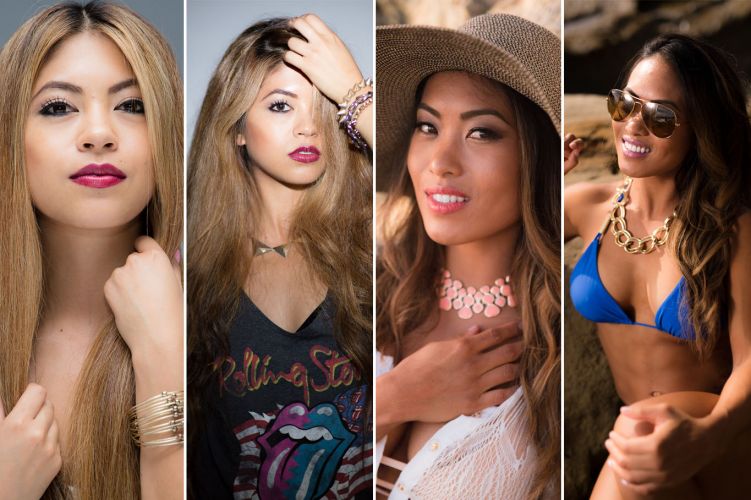From an artistic standpoint, there is no wrong or right way to light a scene. There’s no denying, however, that the way we choose to light our subjects profoundly impacts the style of the images we craft. The results from one lighting setup to another can literally be as distinct as night and day. Whenever you’re trying to capture a particular look, whether based on your own vision or your client’s request, your understanding of light direction and quality will remove (at least most of) the guesswork and help you dial in your vision.
In this article, we’re going to break down basic lighting directions and light qualities to help you take better—or more intentional—portraits. While we don’t go into detail in terms of posing, understanding light direction will allow you to know where to place your subjects in relation to the light sources you have available, which can prove especially helpful when shooting with natural or ambient light.
[Related Reading: 5 Common Key Light Patterns]
Basic Lighting Direction
Light direction plays a significant role in revealing a subject’s shape and texture. More specifically, it’s the shadows we create using light direction that reveal these attributes. We can control our subject’s shapes and textures by adjusting the angle between our camera and our light source. The results can vary significantly based on the given light direction.
Short Lighting

Short lighting occurs when the subject’s chin is angled toward the light source, leaving the majority of the subject’s face in shadow. In general, this light direction creates a more flattering look for both male and female subjects. Casting most of the subject’s face in shadow typically results in a slimmer appearance of his or her face.
Beyond its ability to cast a more flattering light on your subjects, the additional shadows produce more drama within an image, often making it more compelling to look at.
Flat Lighting

Flat lighting occurs when the subject’s chin directly faces the light source. This light direction is typically considered flattering even though shadows are minimized and most of the face is exposed. Some subjects’s faces are less symmetrical than others, however, and the dissymmetry becomes more pronounced—or even exaggerated—when the subject looks directly into the camera with flat lighting. If you experiment with flat lighting your subject and find that the dissymmetry in his or her face becomes distracting, the safest bet is to return to short lighting.
Broad Lighting

Broad lighting occurs when the subject’s chin is angled away from the light source, which allows more light to fall across the side of the subject’s face that is closest to the camera (see example above). While short lighting works well to slim your subject’s face, a subject with an already slim face might benefit from broad lighting to help make his or her face appear wider.
[Related Reading: Light Qualities]
Basic Light Quality
Light quality is determined in relation to the subject. Okay, but what does that mean? Even those who’ve heard of soft or hard light, or even diffused or specular light, often confuse them and mistakenly use them interchangeably. Each type of light quality will fall on or reflect off of a subject differently. Let’s take a closer look to get a better understanding.
Soft Lighting

Soft lighting has to do with the size of the light source in relation to the subject. Photographers use soft boxes to create the effect of a larger light source as the light spreads out as it passes through the diffuser. The effect becomes amplified when the subject moves closer to the light source. When a subject is lit with soft lighting, the shadows will have a noticeably soft edge.
Hard Lighting

In contrast to soft lighting, when a subject is lit with hard lighting, the shadows will have a sharp, defined edge. Hard lighting is generally produced by a smaller light source, and you’ll notice a quicker fall off of light.
Diffused Lighting

Diffused lighting has to do with how the light is emitted. When light passes through a source of diffusion, such as a cloud in the sky or the fabric used on soft boxes, it is spread out and becomes less reflective.
Specular Lighting

Specular lighting refers to light’s reflective nature in relation to the subject. In portraits, specular light tends to reflect highlights on the skin, especially wet or oily skin. This reflection results from the light reaching the skin’s surface with minimal diffusion and bouncing back toward the light source. In other words, if you were to shine a light directly onto your subject with no diffusion, the light would likely create strong and bright highlights, making it specular light.
Conclusion
Light lives at the core of photography. so it stands to reason that a comprehensive overview would go beyond the scope of this article. However, understanding the characteristics of basic light direction and light quality should help you light and pose your subjects more efficiently and with intention.
Here’s a recap of the basic light directions and qualities we provided above:
- Short Lighting
- Flat Lighting
- Broad Lighting
- Soft Light
- Hard Light
- Diffused Light
- Specular Light
If you would like more in-depth information on lighting, check out our Lighting workshops, which are available for purchase in our store. Click here for more information on how to become a Premium subscriber and get access to ALL of our educational content.













